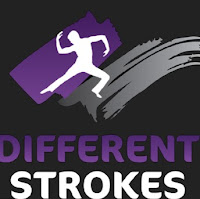Why Dance Is Possibly The Best Activity For Kids
When I was growing up, the kids (mostly girls) in my school who studied dance seemed even more athletic than the jocks and the gym class heroes. They were slender, but solid, with long, strong limbs that could contort in ways that defied everything I'd learned about the limitations of the human body. Surely, those abilities were the result of a strict practice regimen that required physical endurance and raw talent.
A new study from UC San Diego paints a different picture. It says that typical dance classes for children and adolescents only involve "moderate-to-vigorous" physical activity for less than one-third of their total duration. The study considered seven different types of dance, including hip-hop, ballet, tap, and jazz. These classes lasted an average of 49 minutes, meaning that students would engage in about 17 minutes of moderate-to-vigorous physical activity while in attendance. This figure falls short of the CDC-recommended 30 minutes of exercise that kids should receive outside of school.
"This is a very commonly used opportunity for young people, especially girls, to be physically active and we find that they are inactive most of the time during dance classes," said James Sallis, professor of family medicine and public health. "We see this as a missed opportunity to get kids healthier."
Even though I have about as much aptitude for dance as the computer I'm typing on, I know that merely measuring the amount of physical activity undertaken in classes doesn't tell the whole story. Learning to dance is not like running on a treadmill; it's an artform that requires focus, precise technique, and attention to detail. The study notes that when dance students are not engaged in physical activity, they might be "standing, listening, or stretching." Dance classes require students to learn from a teacher's expertise, and, often, to work in a group. While doing so may not be physical, it certainly benefits a child's communication, cooperation, and ability to follow directions.
Indeed, the study acknowledges the non-physical advantages of studying dance. "Though there are important social, developmental, cultural, and aesthetics benefits of dance that should be maintained and strengthened, it should be possible to increase physical activity," said Sallis.
That may be true, but increasing physical activity could negatively impact other aspects of dance instruction. Dance gets kids moving, but it's also important that they maintain proper choreography and technique. Most dance teachers draw on years of experience in their field, and have a sense of how to balance the artistic and athletic elements of the craft. And while the times recorded in the study left children about 40 percent short of their recommended daily exercise, the research failed to consider the time that students spent practicing outside of the classroom.
Source : bigthink.com


Comments
Post a Comment